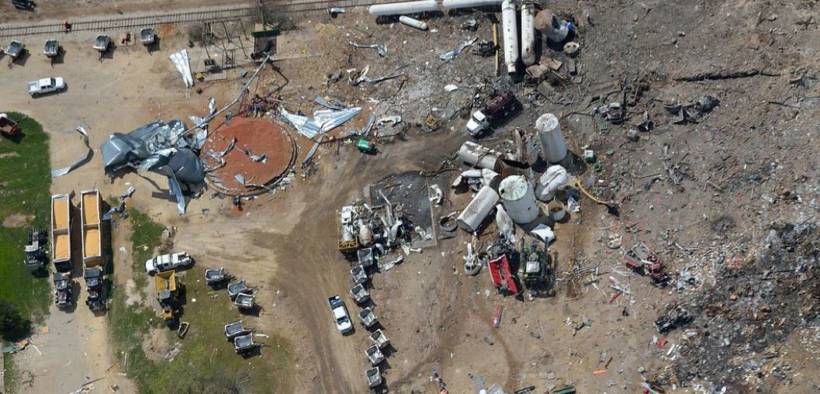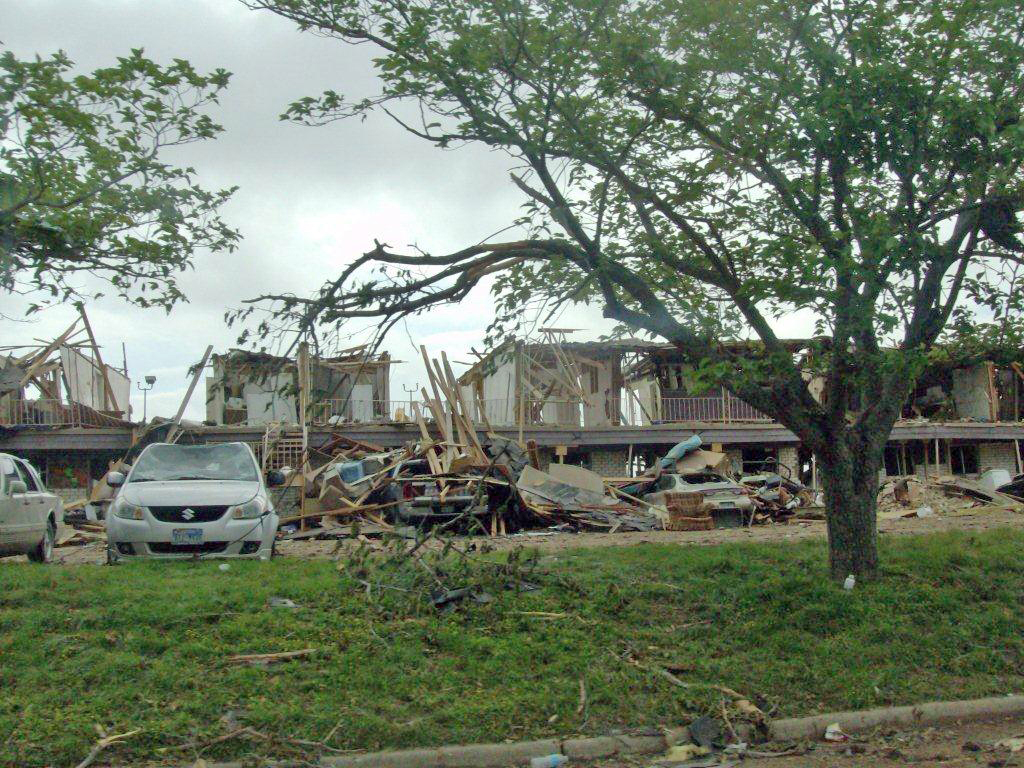EPA Rolls Back ‘Chemical Disaster Rule’ Adopted After Texas Chemical Explosion

The rollback of the Chemical Disaster Rule is the latest of the EPA’s slashed environmental regulations, joining asbestos, coal ash, chlorpyrifos, glyphosate, methane, and carbon emission deregulations.
The Environmental Protection Agency weakened an Obama-era regulation dubbed the Chemical Disaster Rule aimed at preventing disasters caused by dangerous chemicals on Thursday, a move critics condemned as the latest evidence that the Trump administration values corporate profits above the safety of the American people.
“Given the EPA is first and foremost a public health agency, it is unconscionable that the Trump administration would gut key protections for emergency responders and people living near facilities that handle potentially dangerous chemicals,” Elena Craft, senior director of climate and health at the Environmental Defense Fund, told the Washington Post. “We need more-detailed emergency plans, increased transparency and safer technology. This action moves in the wrong direction when it’s clear that the cost of chemical disasters is far greater than keeping communities safe.”
The Chemical Disaster Rule was imposed by the Obama administration after a 2013 explosion in West, Texas killed 15 people, including 12 first responders, and injured over 160 others. The rule mandated that chemical companies take new measures to prevent similar accidents, including the use of safer technology and procedures, third-party audits in the event of a problem, determining the “root-problem” of any spill, and public access to information about the types of chemicals stored on their sites.

This apartment complex was completely destroyed in the fertilizer explosion to impacted West, Texas residents on April 17, 2013. The apartment complex was located accros the street from the fertilizer plant that exploded. (Photo: State Farm Insurance)
Previous EPA head under Trump, Scott Pruitt, a former coal lobbyist who resigned amid ethics scandals, suspended the Chemical Disaster Rule in his first month as administrator in 2017. Current EPA head Andrew Wheeler, also a former coal lobbyist, finalized the rollback and nullified the Obama administration’s rule. Wheeler argued that making information about chemicals public could enable terrorist attacks, and said the regulations were too burdensome on the chemical industry.
Nearly 40 House Democrats urged the EPA to retain the Obama-era rule, citing 73 accidents and leaks that have taken place since it was suspended. Opponents of the rollback argue it will disproportionately endanger low-income communities and workers.
“Fence line communities continue to suffer the extraordinary risks brought on by big industrial facilities and all too frequent chemical accidents,” said Dr. Andrew Rosenberg, director of the Center for Science and Democracy at the Union of Concerned Scientists (UCS), as per Common Dreams. “This rule adds insult to injury by refusing to address the need to reduce disaster risks and consider community needs. That is completely unacceptable.”
Critics argue the Chemical Disaster Rule rollback reflects the Trump administration’s disdain for scientific expertise and its dedication to corporate profits above public health. President Trump denies climate change and has worked to purge his administration of scientists. The chemical rollback is the latest of the EPA’s slashed environmental regulations, joining asbestos, coal ash, chlorpyrifos, glyphosate, methane, and carbon emission deregulations, as well as efforts to restrict science used in public policy.
While the Trump administration’s ties to fossil fuel companies have been broadly scrutinized, in part because both the EPA and Interior Department heads are former coal lobbyist, the White House’s ties to major chemical companies have gained less attention. Numerous former DowDuPont employees currently work in the Trump administration, such as former Dow lobbyist Ted McKinney, the USDA undersecretary for trade, Ken Isley, the head of the Foreign Agricultural Service, and Scott Hutchins, a deputy undersecretary at the USDA. Dow also gave a $1m donation to the Trump inaugural fund.
“This administration is gutting the few protections we have against chemical explosions and other toxic disasters, just to appease chemical companies who only worry about their own profit,” 13 groups said in a joint statement. “Yet for the millions of families and children who live by chemical facilities, this is not about money, it’s about surviving chemical disasters. Lives depend on this rule.”
News of the Chemical Disaster Rule rollback comes a week after a federal appeals court ruled that the Trump administration illegally “excluded millions of tons of some of the most dangerous materials in public use from a safety review,” as reported by the Associated Press.















